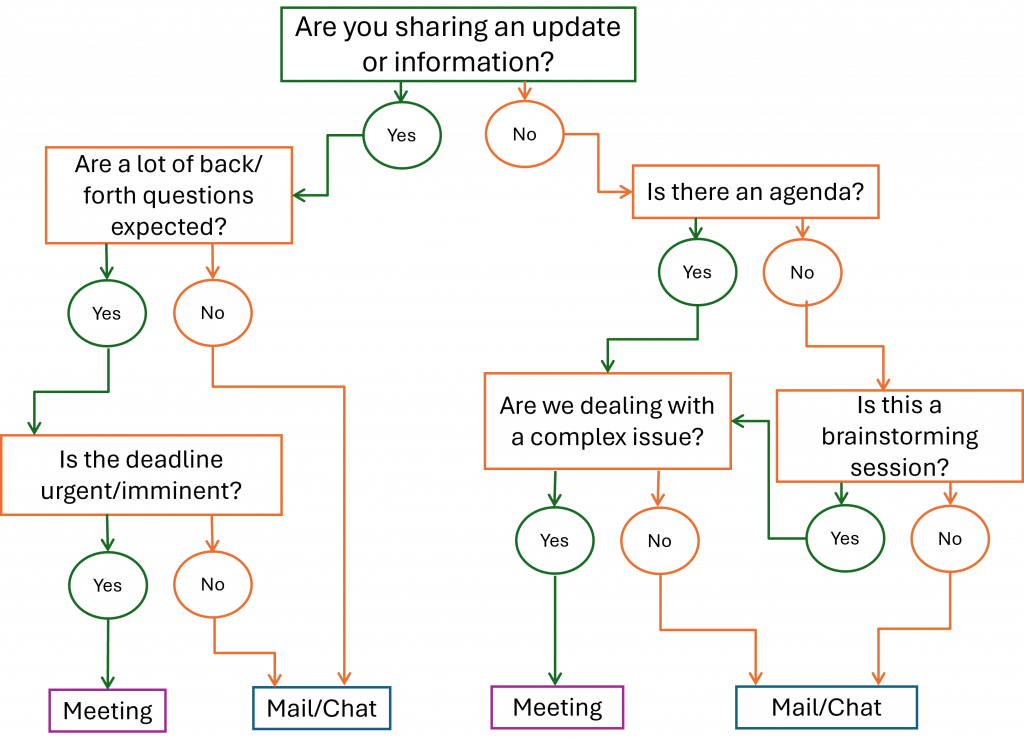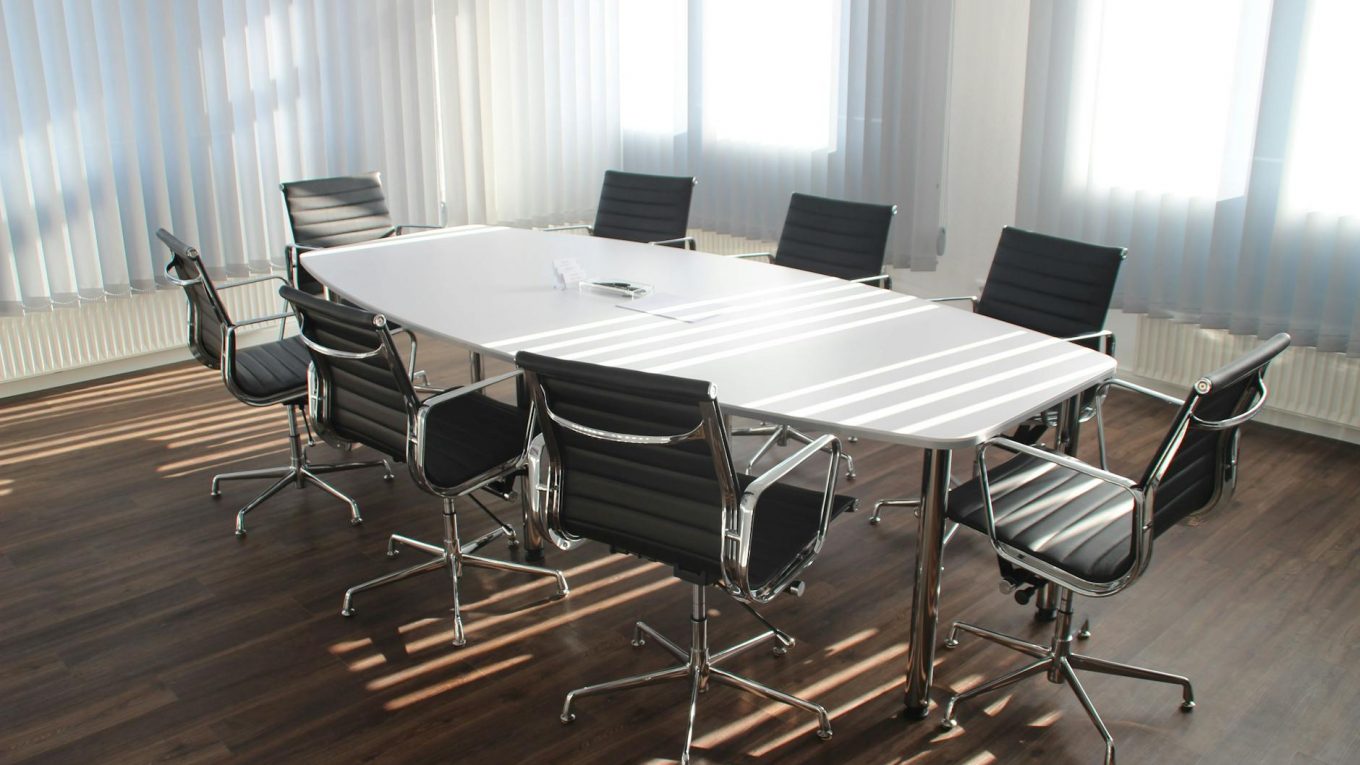Load-shedding – when meetings and calls get too much
In March, another tinnitus flare-up meant I had to resort to additional tinnitus management mechanisms. This allowed me to keep going, and to take back control of the issue. Hybrid work and remit creep have meant increases in virtual meetings – both recurring or very densely scheduled ones. At some point, it gets too much for me with either headphones or a conference spider. Cutting meetings is the realistic measure.
At home, the noise level from my three happy, excitable and energetic young children can also get too much. With tinnitus, the impact on me of non-stop noise exposure is draining and I often retreat for a snooze. On some occasions, the snooze lasts for 2 hours. A more frequent need for one (i.e. particularly during the working week) is an indication of noise overload.
There are a few stealth tricks that I use to prevent things from getting out of control. I am able to turn down all the speakers around the house from my phone. And the maximum volume on the children’s Tonie Boxes is lower than the default value.
Verterminierung – the scourge of hybrid work
German has a concept of Verterminierung, meaning calendar gridlock and a continuous cycle of meetings. How people manage wall-to-wall calls and meetings throughout the day, every day of the week eludes me. Some corporate cultures conflate being in meetings with success. Sadly, Verterminierung has spilt over into private life: organising a child’s birthday party now needs 4-6 weeks’ lead time. In a work environment full of meetings there is too much “work about work” rather than “working”.
I struggle with densely packed meetings, and using wear various earplugs to reduce the noise overload. Adjacent appointments also mean a constant rush from one to the next, and invariably they over-run. This is less of an issue between virtual meetings than physical ones. But there is also no opportunity to stretch legs between meetings. In addition to the noise overload, a steady stream of meetings breaks my concentration and flow. This was picked up on in comments on my Translation vs Tetris blogpost). That post was given a re-airing in light of Liz Truss’ new book.
However, the typically hybrid setting means that meetings also place additional load on ears. Four years on from the Covid-enforced change, I regularly have uncomfortable meeting experiences. If I am alone in a meeting room and predominantly in “listen only” mode, I return to my office to escape empty room echoes.
Banishing sales calls
Spring seems to be a peak season for sales calls. Not unsolicited, because I clearly opted-in at some stage to be allowed to be contacted by phone. I frequently find their machine-gun pace and loud volume of such calls very painful. Usually when they first draw breath, I stop them and disarm them. I instruct them to speak slowly, clearly and at a lower volume and explain that the latter also helps them to speak in a more comfortable tone. If call centre operatives speed up again, I request an e-mail instead, and information about why it is financially in my interests.
I used to perform a lot of customer service related matters by phone (this is still commonplace in Austria). I now steadfastly contact banks, utilities and mobile providers by Internet chat. My bank, phone provider and electricity and gas providers have proven contactable using their customer service chat. I no longer take sales calls by phone from all of them. Meter readings can now be communicated using the chatbot, phone contracts changed or extended via their app and the like. I also resolved the double charging of my ORF Beitrag this way. Occasionally I have to check whether I am dealing with a human or request to chat to a human operator.
Applying private needs to shorten work meetings – a productivity hack
With how easy it was to apply this for private matters, I thought I would apply it to work meetings. A few mails worked wonders to reduce the frequency or length of meetings. Many meetings are now 30 minute slots rather than 1 hour. I’m going a step further: if I set up a meeting, I use 25 minute slots. Or 50 minutes rather than an hour. This also allows breaks between calls and meetings, and time keeping is tighter. 30 and 60 minute slots have a tendency to “fill the slot” rather than good time-keeping.
Shorter meetings allow me to have larger blocks for focussed work – for translations, terminology and editing. I use wafer-thin gaps to set up and run machine translation tests (a subject of another forthcoming blog post) or terminology entry work.
I discovered another hack by accident. Every Wednesday and Thursday I collect my son from school with alarms at 14:37 or 15:22. I now accept 2pm meetings, scheduled for 1 hour, but will say I have to leave at 14:35. It often means meetings that are shorter, quicker and more focused. If I need a 10-15 minute meeting, I schedule for 15:00 ahead of pick-up at 15:30. For bilateral meetings, the meeting planner can shoehorn in meetings to not break up longer meeting-free blocks.
In case people are wondering whether there is a way to enforce this in Outlook by default – there is.

In the Outlook Options for the Calendar, meetings can be selected to “start late” or “finish early”, and in my case have been set to be shortened by an five minutes by meetings of less than one hour or 10 minutes for meetings of one hour or longer. There is of course another reason why I have chosen these particular lengths – they tie in with pomodoro lengths.
Could that meeting be an e-mail, a Teams chat, or even a form?
We’ve all left meetings with the feeling that “it ought to have been an e-mail, or a Team chat.” With an M365 roll-out there’ll also be “that e-mail could have been a chat”. It’ll be interesting to see how quickly we move from an e-mail to a chat-based corporate culture. Naturally, I’ll adjust my translation workflows (in terms of status updates, translator’s questions and comments, and terminology issues.
Many meetings don’t have to be meetings. The following flow diagram is one I put together from a number of different sources to reduce meetings, meeting-related dead time and to help regain part of my working day.

